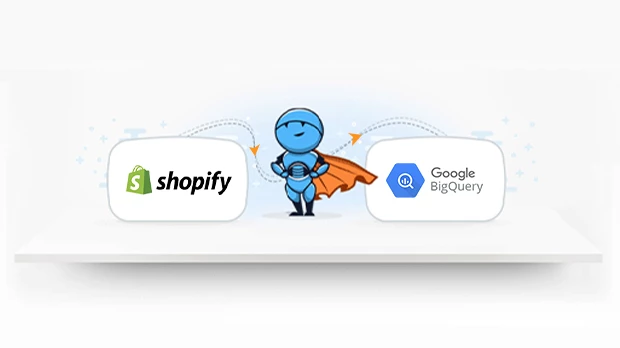Google BigQuery is a cloud-based enterprise data warehouse constructed with BigTable. It is entirely controlled and serverless. BigQuery performs admirably with data of any size, ranging from several Petabytes to an Excel spreadsheet with 100 rows. The fact that it can quickly run a sophisticated query on such data is its most significant feature. It is important to know how to connect Shopify to Bigquery.
BigQuery is user-friendly and suitable for beginners because it allows SQL-like queries. It can be accessed via the client library (written in C#, Go, Java, Node.js, PHP, Python, and Ruby), online UI, or command-line tool. You can submit a JSON request to complete our task and utilize its REST APIs.
It will be challenging to design this arrangement because you need to consider things like RAM size, DCOS or Kubernetes, and other considerations. Additionally, you will need to set up and manage a Kafka cluster if you have streaming data coming in. All you need to do to finish using BigQuery is upload your CSV/JSON file in bulk. BigQuery takes care of everything backend for you. Use Fluentd if you require streaming data ingestion. This also has the benefit of easily integrating BigQuery and Google Analytics.
BigQuery is a serverless, petabyte scaled, highly available solution that lets you quickly run intricate SQL queries. It frees you from managing infrastructure so that you can concentrate on analysis. Hardware is not visible to us and is entirely abstract, not even in the form of virtual machines. It is crucial to know how to move Aftership to Bigquery.
How Is Data Stored in BigQuery?
BigQuery uses Capacitor, a columnar format that replaces ColumnarIO, to store data. BigQuery attains extremely high scan throughput and compression ratios. In contrast to ColumnarIO, compressed data on BigQuery can now be directly operated upon without needing to be decompressed.
How is the query carried out?
Borg is used by BigQuery to process data. Hundreds of Dremel jobs are instantiated concurrently by Borg across necessary clusters comprising thousands of machines. Apart from allocating computational capacity for Dremel tasks, Borg also manages fault-tolerance.
Now, how would one create and run a query that retrieves the result across thousands of nodes? The Tree Architecture proved to be effective in overcoming this obstacle. With the help of this design, a massively parallel distributed tree is created, allowing for the lightning-fast aggregation of query responses from the leaves and tree.
A Comparison between Redshift and BigQuery
You must allocate various instance types and build your own clusters with Redshift. This has the advantage of allowing you to adjust the compute and storage to suit your requirements. But you have to scale up/down based on the knowledge of (virtualized) hardware limitations. Please be aware that each instance you spin up will incur an hourly fee.
For many engineering teams, having data dispersed over numerous databases is a given. However, that need not entail difficult and drawn-out questions. This is the context in which Google BigQuery is useful! With the tool, developers can quickly and easily execute complex searches by gathering all the data in one location.
Google BigQuery: What is it?
With Google BigQuery, you can store and query massive datasets in the cloud using an analytics and data warehouse platform. Processing enormous volumes of structured and unstructured data in real-time is made simple by Google’s completely managed serverless solution. With BigQuery, you can build predictive models with the BigQuery Machine Learning (BQML) service or swiftly examine gigabytes of data with SQL-like queries.
BigQuery is an affordable, user-friendly tool that offers insightful data. Large datasets may be stored and queried in the cloud using BigQuery, doing away with the requirement for physical infrastructure. You may easily scale BigQuery up or down in accordance with your needs for data storage.
Why is BigQuery a good choice?
BigQuery is an effective technology that offers companies a number of advantages, such as more rapid data processing and increased productivity. Some tips for utilizing BigQuery are as follows:
1. Speed: BigQuery has a fast and accurate way of processing massive datasets. It can evaluate gigabytes of data in seconds, without requiring any thought for the underlying infrastructure. Additionally, you may connect datasets from many sources and execute sophisticated queries quickly. BigQuery makes it easy and rapid to examine big datasets and draw conclusions.
2. User-Friendly: BigQuery is user-friendly and compatible with several programming languages, including Python, JavaScript, and SQL. Additionally, users can upload data and query with little effort because to its user-friendly interface. Additionally, it provides developers with a range of APIs so they may use BigQuery from outside apps.
Best Practices for E-commerce Analytics with Shopify, AfterShip, and BigQuery
Data Security and Compliance
Make sure that all information is handled securely and in accordance with applicable data protection laws when data moves AfterShip to BigQuery. Implement encryption measures and regularly audit data access to maintain the integrity and confidentiality of sensitive information.
